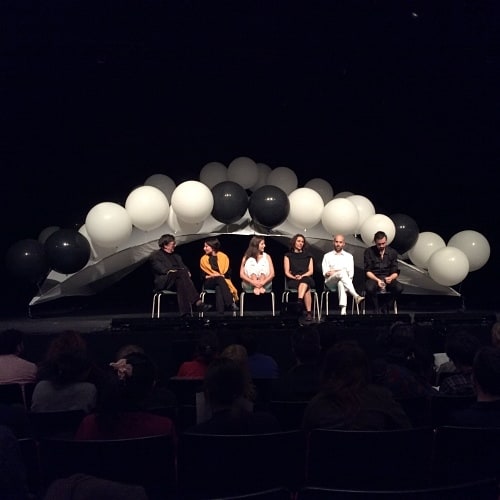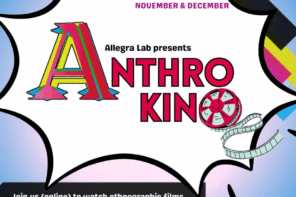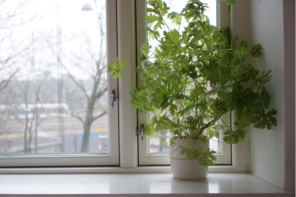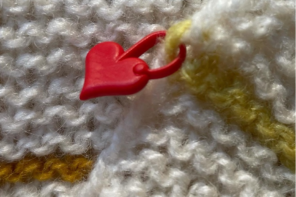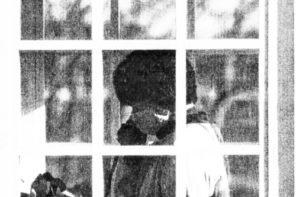Theatre, it could be argued, involves three major concerns: warning (criticism), representation (mimesis), and collective aesthetic imagination (aisthesis/poïesis). While the first instrumentalises theatre, and the second underestimates its possibilities, it is primarily the third that sets it apart from ‘Science’ and ‘Politics’. Or is it?
The capacity to imagine the world differently than how it is and to make that pictorial imagination perceptible in images and language has been described by the German philosopher and cultural historian Hans Blumenberg as one if not the fundamental human trait. The philosopher Hans Jonas even spoke of man as Homo pictor, crucially distinguishing human imagination from the mere illustration of the world. Humans, for Blumenberg and Jonas, require this capacity to picture, represent, and imagine the world so as to be able to live in it: As ‘deficient beings’ (Arnold Gehlen) lacking other animals’ intuitive sense-orientation in the world, we are forced to rely on our capacity to remake, to imagine, to fantasise. It is therefore a curious and in many ways all too human endeavour to play and enact on a stage what is happening around us. By mimicking or representing our Umwelt and other humans, the philosophical anthropologist Helmut Plessner once wrote, actors become prime anthropological subjects. How then does Gaïa Global Circus mobilise theatrical representation and with view to where and what?
Gaïa Global Circus, a project by Bruno Latour directed by Frédérique Aït-Touati and Chloé Latour, is primarily an exercise in warning and representation; practices which are never disconnected from the imagination of the otherwise possible. Moreover, the project is an experiment with the experience of disconnect between us as humans and the world on which we strut and fret like players on a stage. This disjunction between wonder and fear, admiration and abomination, Latour suggested in 2011, is characteristic of our relationship with the world. It is one of awe, of being “dumbfounded by the almost total disparity between the emotions we should feel when faced with ecological problems …and the feeling of worried, yet vaguely blasénonchalance with which we greet each increasingly devastating item of news” (Aït-Touati and Latour).
We might be surprised to hear that two academics decided to respond to these challenges by conceiving of and putting on a play, but with view to Plessner’s and Blumenberg’s observations, perhaps we shouldn’t be. Furthermore, Latour is founding director of the masters programme SPEAP (Programme of Experimentation in Arts and Politics) at Sciences Po Paris, which, he writes, responds to a “crisis of representation” in politics and the sciences. Latour argues that
it is an extension of this crisis that has been troubling, for more than two centuries now, the world of art, in its quest for political relevance and renewed links with the social sciences.
Aït-Touati, too, has a long-standing concern for this interrelation and has published extensively on the relation between literature and science (see Fictions of the Cosmos. Science and Literature in the Seventeenth Century, University of Chicago Press, 2011, or Contes de la Lune. Essai sur la fiction et la science modernes, Gallimard, 2011). She argues that the 18th century performed science and politics in theatrical ways – and that it would be time for theatre to reciprocate this representative relationship: to talk to and about politics and science in theatre. The basic question behind Gaïa Global Circus, she commented after the play, was therefore precisely this:
How to do theatre with scientists/science?
The 90-minute play is set in front of, beneath, and around its principle prop: a “sheet with balloons” (audience member), “canopy” (Latour), or “the world, a climate model, Gaïa” (the actor-characters). This floating ‘climate model’ attached to helium balloons, we are told at the outset of the performance, “is the best thing we found to show what is happening to the world”. Given the post-dramatic nature of the play and its tentative movement beyond the fourth wall, we may be right to assume that this ‘we’ comprises the directors, the actors, and the characters.
Following a brief introduction and explanation of the questionable “high-tech arte povera props” (audience member), the four actors juxtapose (sometimes) comedic quasi-commedia dell’arte, improvisation, and fragmentary scene sketches that respond, represent, and mock the hyped media hotchpotch of climate change academia and activism. Of the various thin red threads, modern-day Noah’s attempt to fund the construction of a permanent arc spins an analogy to the all-encompassing atmosphere hovering above the scene. The play picked up pace as it ended when the quasi-majestic atmosphere glides through the fourth wall and into the auditorium, three feet above our heads: “She’s beautiful, she’s horrible”, one of the actors concludes.
To the roaring applause of the audience which had presumably attended the preceding inaugural CAOS (Centre for the Anthropology of Sustainability) conference at UCL, six chairs were set-up after the final curtain to expose the minds and bodies behind the performance. Two heads of the much larger production team behind this artistic contribution, Bruno Latour and Frédérique Aït-Touati, were in consensus about what this play had and should do:
It is not “the job of theatre to find a solution”(Latour), but to play with “the dialectic between philosophical reasoning and theatrical experiment”(Aït-Touati). “It is a dance, rather than an argument”(Latour).
While one may or may not agree that those used to construe arguments should venture out of their office comfort zone and dance (or equivalent thereof), I would have liked to hear more about the degree to which artists and scientists collaborated and their endeavours intersected: did the rehearsals engage with questions of scientific labour? Were theatrical forms of knowledge-production (improvisation, chance, study, rehearsal) brought into the scientific laboratory? Among the few cues was an interesting insight into the productive process: Following initial research, the creative team behind Gaïa Global Circus invited the playwright Pierre Daubigny to respond in writing. This post-dramatic strategy of écriture de plateau echoes the increasingly common interdisciplinary dialogue between (ethnographic) research and performance improvisation in the growing climate theatre niche (cf. 3rd Ring Out and METIS/World Factory), but it remained for the audience to find out about it in the post-performance setting of a Q&A. Why not bring it into the play? Why not problematise the in-between science, art, and politics nature of the mode of production and inform us about the collaborative or failed instances and processes of translating one(s) into the other(s)? The decisions may remain artistic ones, but an artistic commentary on them might have productively elucidated the ambivalence and/or disconnect between art, politics, and science.
Perhaps it is Aït-Touati’s own description of the creative process as “philosophically informed improvisation” that pinpoints the internal tension: if one seeks to avoid an art that is only “half-science” and science that is only “quasi-art”, then it may have been productive to put more trust into the inquisitive and imaginative capacities of either. For the feeling didn’t leave me that Gaïa Global Circus presupposes an affirmative and consensual audience – one that throws out the climate change sceptic rather than engage him in debate (which as Latour recounted, was precisely what happened at a previous performance) – but it also doesn’t challenge it if it stays (cf. Thomas Oberender’s The Enemy of the People at the Barbican). While it’s laudable to pronounce a resistance to ideological didacticism when producing a play on the ideological facets of descriptive science, it would have been noteworthy had this translated into more than “that which remains of science: a concern for the model, a concern for representation”(Aït-Touati).
Gaïa Global Circus
English language Premiere, Bloomsbury Theatre, London, 14 February 2015
Conception: Bruno Latour, Frédérique Aït-Touati, Chloé Latour
Text: Pierre Daubigny
Directors: Frédérique Aït-Touati & Chloé Latour
Actors: Claire Astruc, Luigi Cerri, Jade Collinet, Matthieu Protin
Further watching:
Bruno Latour: “Waiting for Gaïa : composing the common world through arts and politics” (French Institute, London, 2011)
Frédérique Aït-Touati: “Théâtre, savoir, politique” (CRAL/EHESS, Paris, 2014)

